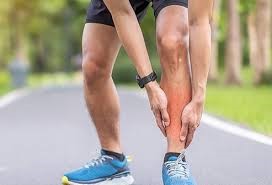As we approach the warmer weather, many of us come out of hibernation and find ourselves ramping up our exercise loads to get our summer bodies ready. “Shin Splints” can be one of the most frustrating roadblocks for runners of varying levels, particularly novice runners.
What are shin splints

Otherwise known as “Medial Tibial Stress Syndrome”, Shin Splints is a term used to describe pain along the medial border of the shin bone. It often occurs when the associated muscle and bone tissue become overloaded through repetitive foot impact with the ground. Often when there is a change/increase in physical activity levels or running, the repeat trauma gradually results in pain and inflammation along the shin, making it hard to continue running and achieve your goals.
How to manage shin splints
Initially, it is important to manage our pain levels through rest, ice, and pain medication/anti-inflammatories. Taking a break from running or decreasing your running load is a vital component in getting this injury right. An Osteopath can assess the extent of the injury in order to determine the amount of rest or de-load required.
Lower impact alternatives such as swimming, walking, or using a cross trainer can be a great way to keep up your fitness whilst unable to run.
As one of the main causes of this injury is a sudden increase in activity levels, load management is a crucial factor in our return to running. It is important to start small and gradually increase one thing at a time whether it is distance, duration, speed, or frequency. This will ensure our muscle and bone tissue can adapt and build the capacity to keep up with the increased training loads, therefore preventing further flare ups.
Running on grass rather than concrete, and wearing supportive footwear or shock absorptive insoles can also play a vital role in reducing the amount of force going through your shins.

Other risk factors for developing Shin Splints such as foot biomechanics and increased BMI should also be addressed with the help of the appropriate health professionals.
Finally, deficits in calf strength and flexibility have also been linked to an increase in Shin Splint prevalence (Madeley et al., 2007). Therefore, performing stretching and strengthening exercises such as calf raises (straight knee & bent knee) can also assist through improved ankle control and absorption when our foot contacts the ground.



